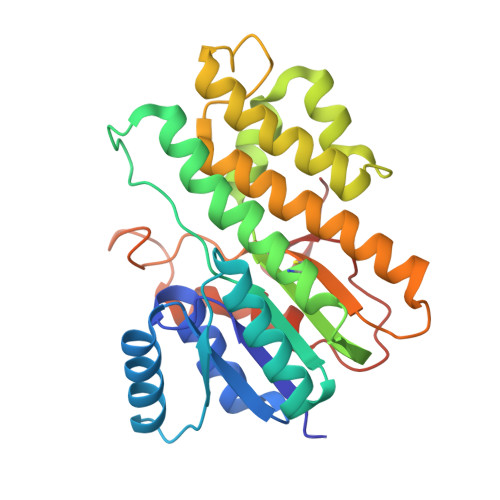Glutathione traps formaldehyde by formation of a bicyclo[4.4.1]undecane adduct.
Bateman, R., Rauh, D., Shokat, K.M.(2007) Org Biomol Chem 5: 3363-3367
- PubMed: 17912391
- DOI: https://doi.org/10.1039/b707602a
- Primary Citation of Related Structures:
2PFG - PubMed Abstract:
Glutathione forms complex reaction products with formaldehyde, which can be further modified through enzymatic modification. We studied the non-enzymatic reaction between glutathione and formaldehyde and identified a bicyclic complex containing two equivalents of formaldehyde and one glutathione molecule by protein X-ray crystallography (PDB accession number 2PFG). We have also used (1)H, (13)C and 2D NMR spectroscopy to confirm the structure of this unusual adduct. The key feature of this adduct is the involvement of the gamma-glutamyl alpha-amine and the Cys thiol in the formation of the bicyclic ring structure. These findings suggest that the structure of GSH allows for bi-dentate masking of the reactivity of formaldehyde. As this species predominates at near physiological pH values, we suggest this adduct may have biological significance.
- Howard Hughes Medical Institute, Department of Cellular and Molecular Pharmacology, UCSF, 600 16th St., San Francisco, CA 94143-2280, USA.
Organizational Affiliation:





















